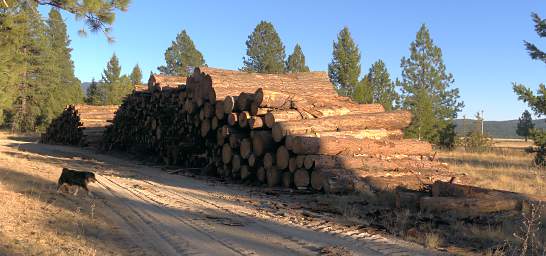
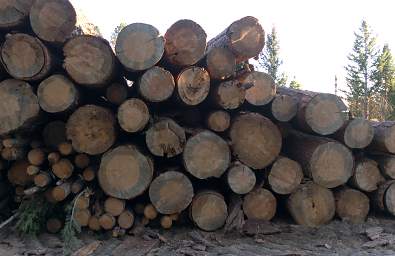
The piece of ground just upriver from ours has been hit pretty hard the past decade or so by a combination of pine beetles, root rot, and spruce budworm -- the same three things that have decimated the forest on our upper bench. This summer the owner stopped by and we walked the ground together. It was pretty heavily burdened with dead timber and much of it was overgrown with young Douglas Fir. This on ground which naturally would burn every 15 years or so and have an open stand of Ponderosa Pine. This fall I learned there were cost share funds available for wildland interface fuel reduction, so I contacted the owner and they agreed to try to thin it out. We combined that with a small bit I had missed when thinning our ground earlier, and a piece from my other adjoining neighbor which was down on the same bench.
The thinning was done by Leelyn Cahoon of Bull Creek Forestry out of Seeley Lake, MT. He used a rubber tired Tigercat LH822C Harvester and a forwarder on tracks, plus a saw crew.
The prescription was to leave as many large Ponderosa Pines (PP) and healthy Doug Firs (DF) as possible, plus some snags for wildlife. A crown spacing of 10 feet was required for the cost share. The young overcrowded DF were to be thinned in favor of PP if possible. Small stuff would be left on the ground for matting to reduce ground disturbance, and any excess would be piled for later burning if necessary. When I walked the ground with Leelyn prior to starting work, he said they couldn't get a loaded log truck up the access road, so we decided to deck the logs by the road on our place.
After they had started work and I walked up to check out the logs I was at first surprised by some of the big pines in the deck; then I realized they were excess dead / diseased ones, not live ones.
 |
 |
| Log Deck | |
Where there were still good pines left, the ground now is somewhat open and park-like.
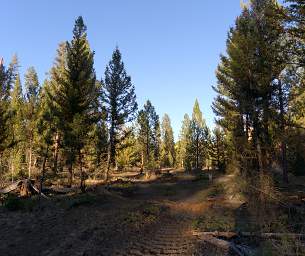 |
 |
| Open Understory in Ponderosa Pine Ground | |
In some places there was nothing but thickets of Douglas Fir, so where they were thinned out it looks pretty open. But there are young DF trees left and they will grow more rapidly and healthier as a result.
 |
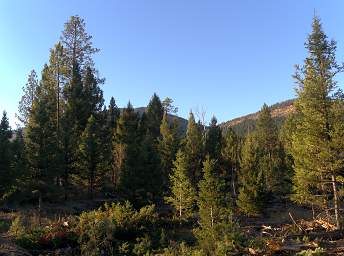 |
| Brush Pile | No Ponderosas, overcrowded Douglas Firs |
The stand below was a thicket with many dead PP and DF and a real fire hazard. There were a lot of trees taken out and it looks a lot better; I didn't realize there were as many good trees left as there were.
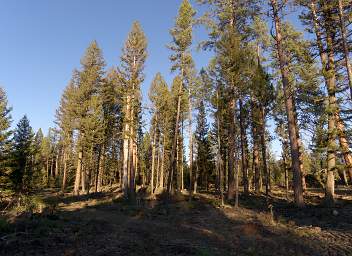 |
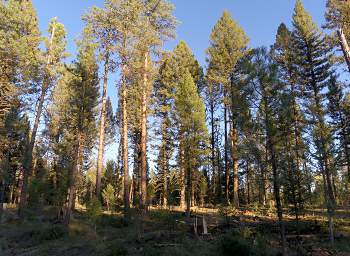 |
| Mixed Ponderosa Pine and Douglas Fir | |
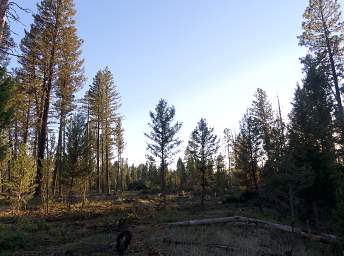 |
 |
| Overcrowded Young Firs Removed | |
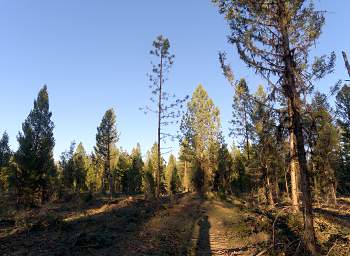 |
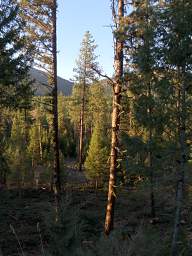 |
| Only a Few Good Trees in Some Spots | |
The Tigercat LH822C used on this project is pictured below. It's an amazing machine. With it the operator can cut a large (24") tree, limb it, cut it to length, and discard the top; all in less than a minute. There's a you-tube video showing Leelyn at work with it.
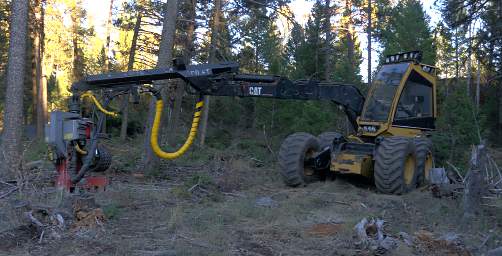 |
| Tigercat LH822C Harvester |
Because the forwarder was a tracked vehicle, the ground was torn up a bit more. I am going to try to get some native grass and forb seed to broadcast on the disturbed areas after we get some good hard frosts.